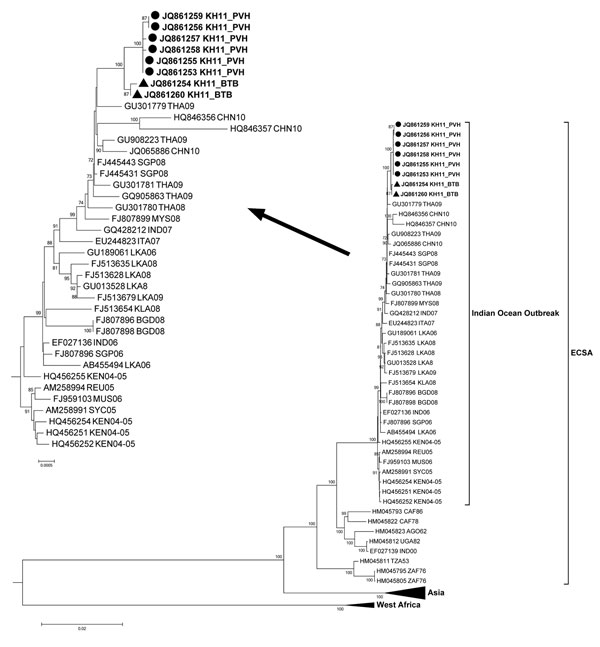Volume 18, Number 12—December 2012
Dispatch
Reemergence of Chikungunya Virus in Cambodia
Figure 2

Figure 2. . Phylogenetic tree based on the whole genome of chikungunya virus (CHIKV). Viruses were identified by using the GenBank accession number, country code, and year of isolation. Boldface indicates strains from Cambodia; circles indicate isolates from Preah Vihear Province; triangles indicate strains from Battambang Province. Arrow indicates enlarged Indian Ocean outbreak strains. All 8 strains from Cambodia carried the A226V mutation. Numbers represent the bootstrap support obtained for respective branches (>70). The tree was rooted by o’nyong-nyong virus (GenBank accession no. AF079456, UGA96-ONNV). ECSA, East Central South African genotype. Scale bars indicate nucleotide substitutions per site.
Page created: November 21, 2012
Page updated: November 21, 2012
Page reviewed: November 21, 2012
The conclusions, findings, and opinions expressed by authors contributing to this journal do not necessarily reflect the official position of the U.S. Department of Health and Human Services, the Public Health Service, the Centers for Disease Control and Prevention, or the authors' affiliated institutions. Use of trade names is for identification only and does not imply endorsement by any of the groups named above.